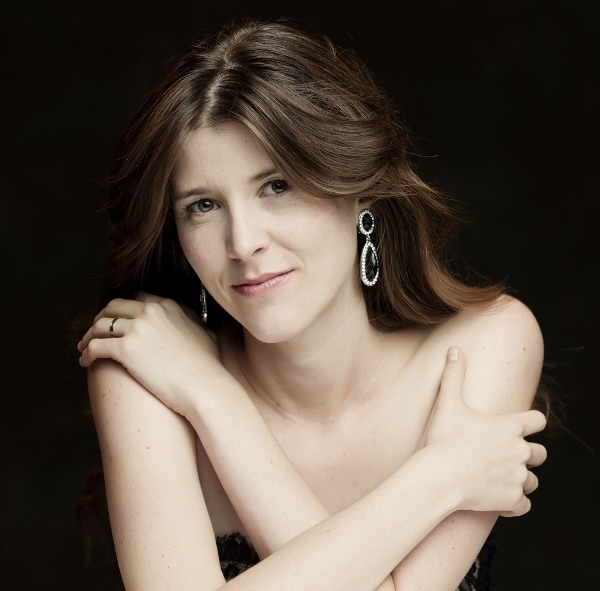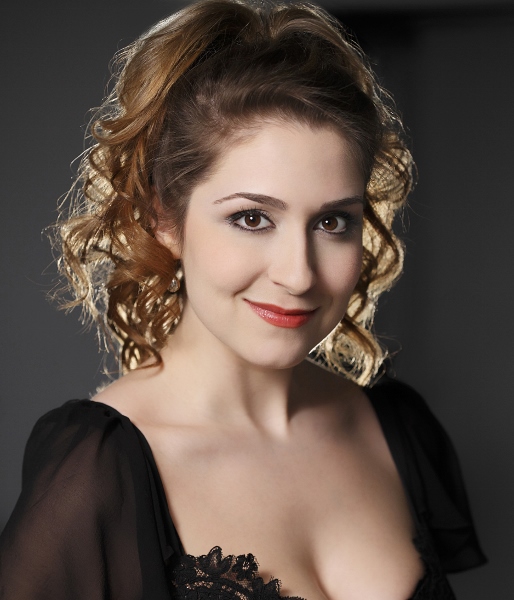BBC Philharmonic, Wellber, Bridgewater Hall, Manchester review - making music magic | reviews, news & interviews
BBC Philharmonic, Wellber, Bridgewater Hall, Manchester review - making music magic
BBC Philharmonic, Wellber, Bridgewater Hall, Manchester review - making music magic
The new chief shows a different way of doing Beethoven

Omer Meir Wellber, who once used to do magic with music for children, pulled a whole set of rabbits out of the hat in his reading of Beethoven’s Fourth Symphony on Saturday. Others may make the work's rhythms and melodies alluring through the sheer forward momentum of a steady beat. Not Wellber.
It's a way of conducting Beethoven symphonies that’s been out of fashion for a long time. Probably not since the days of big orchestras playing his music as if Wagner wrote it has that kind of drama been found there. And Wellber doesn’t go for their kind of sound: he had fewer than 40 strings for the whole of his programme in the joint Philharmonic / Hallé Beethoven series at Manchester’s Bridgewater Hall. Yet his approach to tempo is also one that Wagner himself might have approved of – varied according to the colour of the music, taking its cue from the accents and weight of the sounds. It could easily catch off balance an orchestra that thought it already knew everything about Beethoven, but this one was with him all the way, eyes glued to his hands and responding in detail to his direction.
There was much to enjoy in it other than his flexible pacing – some wonderful skirling of close-up low notes from horns and double basses, huge crescendos and contrasts of power in the Adagio, and varied and subtle phrasing in the third movement, which was all clarity and suavity in its outer sections (but, again, highly contrasted in the trios). And the finale was, if anything, the real scherzo of the piece, with cheeky-sounding juxtapositions of extreme weight and lightness, and attractive articulation from all the strings (led by Yuri Torchinsky) and the adroit wind players.
 If the objective of a chief conductor is to make his orchestra talked about, then Wellber will have done that already in only his second Bridgewater Hall main series concert with the Phil in this inaugural season. Can someone do something different with a Beethoven symphony in this year, when everyone’s at ’em again and again? Yes, they can.
If the objective of a chief conductor is to make his orchestra talked about, then Wellber will have done that already in only his second Bridgewater Hall main series concert with the Phil in this inaugural season. Can someone do something different with a Beethoven symphony in this year, when everyone’s at ’em again and again? Yes, they can.
The main event was after the interval: the Mass in C, with the Dresdner Kammerchor, Wellber’s colleagues from the city where he’s principal guest conductor at the Semperoper, bringing their own character to the performance. With 43 of them, I counted, on stage just behind the orchestra, it was a big, warm sound with a lot of pure soprano tone: in the Bridgewater Hall (with the Marcussen organ’s underpinning, discreetly but effectively played by Darius Battiwalla) it was expansive rather than intimate, providing the operatic quality which is there to be found in the music.
A lot depends on the chorus here – which was why we all heard a low C from the bassoon (duly marked by just a tiny swishing of feet from somewhere) before the soloists walked on the platform: their basses open up proceedings before anyone else joins in, and they did it with rock-solid security.
In fact the entire Kyrie movement was one of confidence in coming absolution, and the Gloria a real shout of praise for most of its progress, with more big contrasts of power, and only a few moments of anxiety in the last “miserere nobis” before a jolly romp through the final fugato.
 The soloists revealed their colours in the course of the movement: Luis Gomes definitely a lyric tenor rather than stentorian, but none the worse for that in this music; Evan Hughes on the baritone side of bass-baritone but blending with him; Rachel Frenkel (pictured above by Marco Borggreve) strongly projecting in the alto register; and Emily Dorn (pictured left) effortlessly soaring above the texture in the soprano’s best moments.
The soloists revealed their colours in the course of the movement: Luis Gomes definitely a lyric tenor rather than stentorian, but none the worse for that in this music; Evan Hughes on the baritone side of bass-baritone but blending with him; Rachel Frenkel (pictured above by Marco Borggreve) strongly projecting in the alto register; and Emily Dorn (pictured left) effortlessly soaring above the texture in the soprano’s best moments.
There was energy in Wellber’s reading of the Credo, “Deum verum de Deo vero” stabbed out as joyful affirmation, and by the time the final aspiration to eternal life was in view, the tempo was hectic indeed with the sheer thrill of it.
Contrast came, as Beethoven intended, in the Sanctus, a gentle vision of holiness at first, with the chorus singing in lovely, mellow style, and the soloists rising to the challenge with them in the long and leisurely Benedictus – it’s a tender, quasi-pastoral (even quasi-Pastoral if you think of the Sixth Symphony) piece of writing, and the combined quartet’s sound was unusual, but effective. The Hosannas, as by now expected, were fast and furious, and then the Agnus Dei, with the clarinet and solo horn pouring healing balm upon the choral texture, provided a nearly operatic-style ending that itself answered the prayer of “Dona nobis pacem”.
rating
Explore topics
Share this article
The future of Arts Journalism
You can stop theartsdesk.com closing!
We urgently need financing to survive. Our fundraising drive has thus far raised £49,000 but we need to reach £100,000 or we will be forced to close. Please contribute here: https://gofund.me/c3f6033d
And if you can forward this information to anyone who might assist, we’d be grateful.

Subscribe to theartsdesk.com
Thank you for continuing to read our work on theartsdesk.com. For unlimited access to every article in its entirety, including our archive of more than 15,000 pieces, we're asking for £5 per month or £40 per year. We feel it's a very good deal, and hope you do too.
To take a subscription now simply click here.
And if you're looking for that extra gift for a friend or family member, why not treat them to a theartsdesk.com gift subscription?
more Classical music
 First Person: Manchester Camerata's Head of Artistic Planning Clara Marshall Cawley on questioning the status quo
Five days of free events with all sorts of audiences around Manchester starts tomorrow
First Person: Manchester Camerata's Head of Artistic Planning Clara Marshall Cawley on questioning the status quo
Five days of free events with all sorts of audiences around Manchester starts tomorrow
 Goldscheider, Brother Tree Sound, Kings Place review - music of hope from a young composer
Unusual combination of horn, strings and electronics makes for some intriguing listening
Goldscheider, Brother Tree Sound, Kings Place review - music of hope from a young composer
Unusual combination of horn, strings and electronics makes for some intriguing listening
 theartsdesk Q&A: composer Donghoon Shin on his new concerto for pianist Seong-Jin Cho
Classical music makes its debut at London's K-Music Festival
theartsdesk Q&A: composer Donghoon Shin on his new concerto for pianist Seong-Jin Cho
Classical music makes its debut at London's K-Music Festival
 Helleur-Simcock, Hallé, Wong, Bridgewater Hall, Manchester review - moving lyricism in Elgar’s concerto
Season opener brings lyrical beauty, crisp confidence and a proper Romantic wallow
Helleur-Simcock, Hallé, Wong, Bridgewater Hall, Manchester review - moving lyricism in Elgar’s concerto
Season opener brings lyrical beauty, crisp confidence and a proper Romantic wallow
 Kohout, Spence, Braun, Manchester Camerata, Huth, RNCM, Manchester review - joy, insight, imagination and unanimity
Celebration of the past with stars of the future at the Royal Northern College
Kohout, Spence, Braun, Manchester Camerata, Huth, RNCM, Manchester review - joy, insight, imagination and unanimity
Celebration of the past with stars of the future at the Royal Northern College
 Jansen, LSO, Pappano, Barbican review - profound and bracing emotional workouts
Great soloist, conductor and orchestra take Britten and Shostakovich to the edge
Jansen, LSO, Pappano, Barbican review - profound and bracing emotional workouts
Great soloist, conductor and orchestra take Britten and Shostakovich to the edge
 Jakub Hrůša and Friends in Concert, Royal Opera review - fleshcreep in two uneven halves
Bartók kept short, and a sprawling Dvořák choral ballad done as well as it could be
Jakub Hrůša and Friends in Concert, Royal Opera review - fleshcreep in two uneven halves
Bartók kept short, and a sprawling Dvořák choral ballad done as well as it could be
 Hadelich, BBC Philharmonic, Storgårds, Bridgewater Hall, Manchester review - youth, fate and pain
Prokofiev in the hands of a fine violinist has surely never sounded better
Hadelich, BBC Philharmonic, Storgårds, Bridgewater Hall, Manchester review - youth, fate and pain
Prokofiev in the hands of a fine violinist has surely never sounded better
 Monteverdi Choir, ORR, Heras-Casado, St Martin-in-the-Fields review - flames of joy and sorrow
First-rate soloists, choir and orchestra unite in a blazing Mozart Requiem
Monteverdi Choir, ORR, Heras-Casado, St Martin-in-the-Fields review - flames of joy and sorrow
First-rate soloists, choir and orchestra unite in a blazing Mozart Requiem
 Cho, LSO, Pappano, Barbican review - finely-focused stormy weather
Chameleonic Seong-Jin Cho is a match for the fine-tuning of the LSO’s Chief Conductor
Cho, LSO, Pappano, Barbican review - finely-focused stormy weather
Chameleonic Seong-Jin Cho is a match for the fine-tuning of the LSO’s Chief Conductor
 Classical CDs: Shrouds, silhouettes and superstition
Cello concertos, choral collections and a stunning tribute to a contemporary giant
Classical CDs: Shrouds, silhouettes and superstition
Cello concertos, choral collections and a stunning tribute to a contemporary giant
 Appl, Levickis, Wigmore Hall review - fun to the fore in cabaret and show songs
A relaxed evening of light-hearted fare, with the accordion offering unusual colours
Appl, Levickis, Wigmore Hall review - fun to the fore in cabaret and show songs
A relaxed evening of light-hearted fare, with the accordion offering unusual colours

Add comment